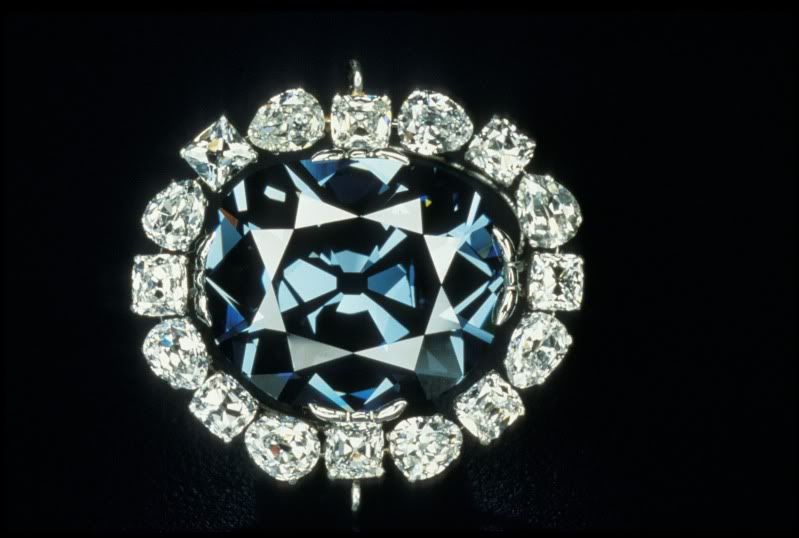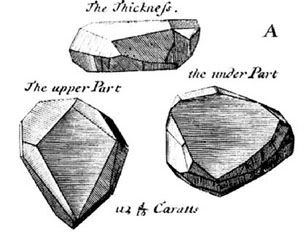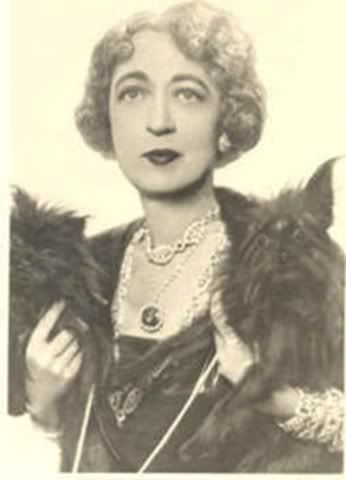
Current day Hope Diamond.
Like many famous gems, the Hope Diamond was cut several times. The first version was known as the Tavernier Blue, a 115-carat crude triangular cut named after French merchant Jean-Baptiste Tavernier. Though Tavernier drew sketches of the diamond in his journal, he made no hint of its origin. One historian has suggested the diamond was acquired in 1653 from the Kollur mine in India. Regardless, Tavernier sold the diamond to King Louis XIV of France in 1669. Louis had the court jeweler recut the Tavernier Blue into the 67.125-carat Blue Diamond of the Crown, also known as the French Blue, which was fashioned into a cravat pin. Later, Louis XV created a more elaborate setting for a pendant for the Order of the Golden Fleece. During the French Revolution, many of the French crown jewels were stolen by thieves and the blue diamond was thought to be lost.

Sketch from Tavernier's journal.
Recently, however, it has been confirmed that the Hope Diamond was indeed cut from the French Blue. The Hope Diamond is consistent with early sketches and recorded dimensions of the French Blue. Before it was renamed the Hope Diamond, the gem was recorded in the possession of diamond merchant Daniel Eliason in 1812, over twenty years after the French Blue's disappearance. In 1839, the Hope Diamond appeared in a gem collection catalog published by Henry Philip Hope, a Dutch banker. It had been set in a simple medallion surrounded by small white diamonds. After Hope's death, the family fought for years over who got what. Henry Thomas Hope ended up with the blue diamond, which he put on display at The Great Exhibition of 1851. The Hope Diamond was kept in a vault until Henry's grandson fell into debt and sold the diamond in 1902 for what amounts to about 3.5 million dollars today. The Hope Diamond exchanged hands several times and, in 1910, was sold to Pierre Cartier, who then sold it to American socialite and mining heiress Evalyn Walsh McLean, owner of the Star of the East Diamond. After McLean's death, her family sold the Hope Diamond to Harry Winston in 1949. Ultimately, Winston donated it to the Smithsonian Institute, where it currently resides.

Evalyn Walsh McLean wearing the Hope Diamond.
No comments:
Post a Comment